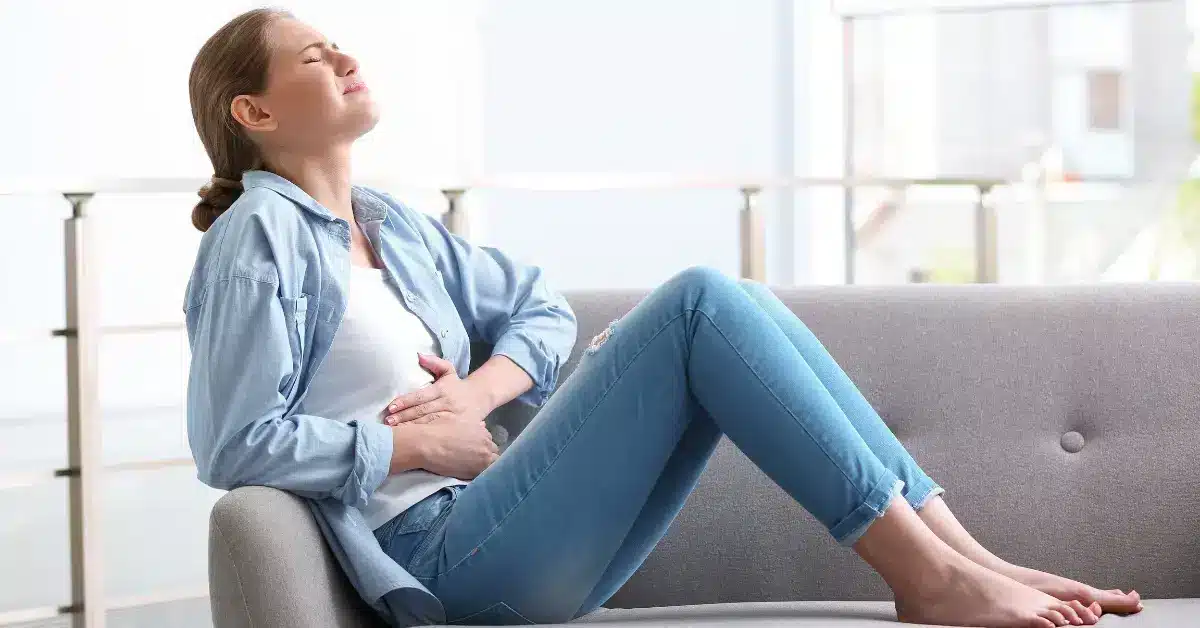PMS Cramps 101: Everything You Need to Know
As a woman, it’s obvious to feel uneasy during your period.
In fact, a study by The Journal of Family Medicine and Primary Care found that 84.2% of girls between the ages of 18 and 25 reported having menstrual cramps.
These cramps can be frustrating and uncomfortable since they cause abdominal pain and discomfort before or during menstruation.
But don’t worry. You’re not alone.
In this article, we’ll delve into what PMS cramps look like, when they usually start, and what you can do to eliminate the problem.
We will also discuss other conditions that can cause these symptoms, so you can better understand your body’s signs.
So, let’s dive in and find out how to make your periods more manageable.
When do PMS cramps start

PMS cramps typically start a few days before the onset of menstruation, but it is at its worst four days before the periods start.
Premenstrual cramps are often accompanied by other symptoms, like mood swings, tiredness, irritability, acne, etc.
But the exact time can be different for each woman.
Some women get PMS cramps a week before their period, whereas others don’t feel them until the day prior to or the day of their period.
What do PMS cramps feel like
PMS, as well as menstrual cramps, feel like a throbbing pain in the lower abdomen.
This pain could be dull, continuous ache, or intense and unbearable.
In some cases, the pain from PMS cramps might also radiate to the lower back and thighs.
Relieving PMS cramps

For some people with mild PMS cramps, simple lifestyle changes might help ease them. These include:
- Regular exercising
- Including essential vitamins and minerals in their diet
- Taking proper rest and sleep
- Avoid excessive caffeine and salt
- Avoid tobacco and alcohol
You can also try
- Keeping a hot water bag or heating pad on your belly or back
- Taking warm baths
- Massaging your back
But in some cases, medical intervention becomes necessary. Your healthcare provider may recommend
- Over-the-counter pain relief medications, like Ibuprofen and Naproxen
- Oral birth control pills
- Dietary supplements
Could your cramps indicate something else
Sometimes, what you might be considering PMS cramps could also signal other problems.
In some conditions, you may notice symptoms similar to PMS, and it might often be confusing to state the reason.
One such reason is early pregnancy. Cramping is a common symptom of both, making it difficult to know if they are PMS cramps or pregnancy cramps.
But in pregnancy, the cramping would be light or mild than PMS cramping and felt in the lower stomach or lower back.
Another condition that is often confused with PMS cramps is implantation cramps which are felt by a woman when a fertilized egg gets attached to the uterine wall.
An implantation cramp feels like a prickling, pulling, or tickling sensation.
Intense cramps are uncommon during implantation, but you might notice some spotting, unlike during PMS cramps.
Some other conditions that can cause similar cramps include:
- Endometriosis
- Polycystic Ovary Syndrome (PCOS)
- Stress
- Adenomyosis
- Pelvic inflammatory disease (PID)
- Fibroids
Takeaway
PMS cramps are a common symptom experienced by many women during menstruation.
It can range from mild discomfort to severe pain, affecting everyday activities.
Relief is possible with painkillers, heat therapy, exercise, dietary changes, etc., but severe cases might require medications.
Knowing your symptoms is important to be able to work with your doctor to create an individualized management plan that meets your needs.
Frequently Asked Questions
How early can PMS cramps start?
PMS cramps can start as early as a week before a woman’s menstrual period and last throughout the first few days of menstruation. However, the exact timing can vary from woman to woman. Some women may experience PMS cramps earlier or later than others, and the severity of the cramps can also vary.
Do PMS cramps come and go?
Yes, PMS cramps can come and go during the menstrual cycle. They typically start a few days before the period and may last throughout the first few days of menstruation. The severity and duration of the cramps can vary from woman to woman and from cycle to cycle.
Where are PMS cramps located?
PMS cramps are located in the lower abdomen and pelvic region. The exact location and severity of the cramps can vary from woman to woman, but they are typically felt in the area below the belly button and above the pubic bone. Some women may also experience cramping in their lower back or thighs.
Do implantation cramps feel like PMS?
Implantation cramps can feel similar to PMS cramps, as they typically cause mild to moderate abdominal discomfort. However, implantation cramps may occur earlier than PMS cramps and feel more like mild prickling or pulling sensations. Additionally, light spotting may accompany implantation cramps, which is not a typical symptom of PMS.
Do PMS cramps feel like pregnancy cramps?
PMS cramps can feel similar to early pregnancy cramps, as both can cause mild to moderate abdominal discomfort. However, pregnancy cramps may feel more like a pulling or stretching sensation in the lower abdomen, while PMS cramps are often described as dull, achy pain.
WowRx uses only high-quality sources while writing our articles. Please read our content information policy to know more about how we keep our content reliable and trustworthy.






